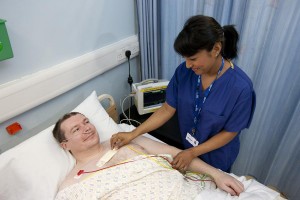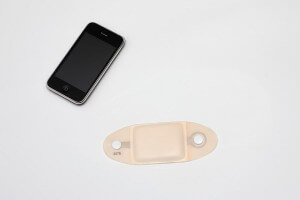All you have to do is press the opening of the lung flute to your mouth and blow into it about ten times (short breaths, like blowing out birthday candles), and viola! The enclosed reed that “flaps back and forth” when you blow into the tube manages to send vibrations into your chest which in turn dislodge excess mucus. Neat-o!
Today, doctors in Japan use the $40 Lung Flute as a tool to collect sputum from patients suspected of carrying tuberculosis, and in Europe and Canada it’s used to help test phlegm for lung cancer. Clinical trials in the U.S. have shown that it is at least as effective as current COPD treatments. At press time, Hawkins expected the device to receive FDA approval any day, and says the reusable device could also provide home relief for patients with cystic fibrosis, influenza and asthma.


